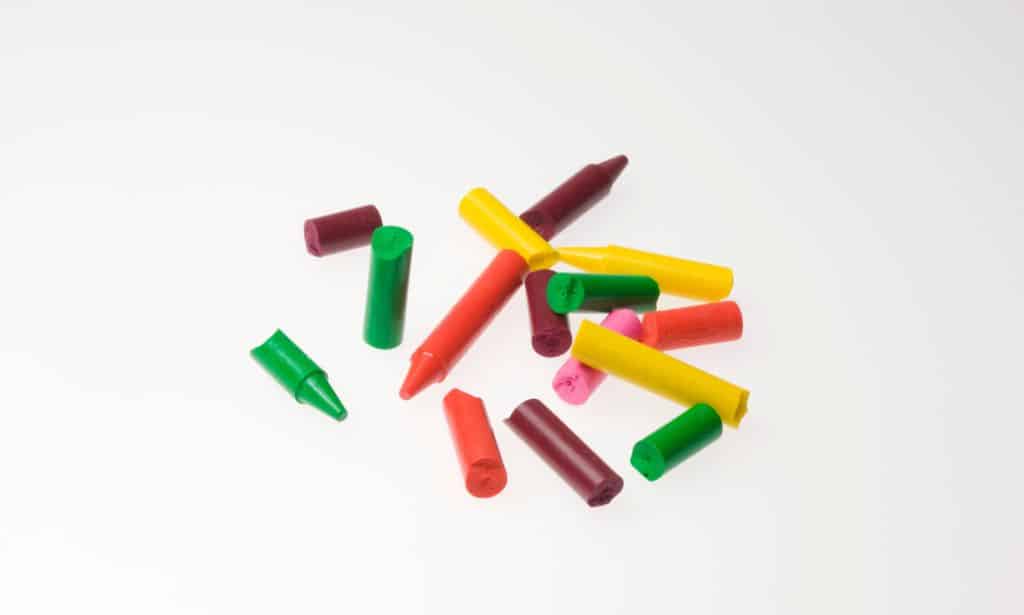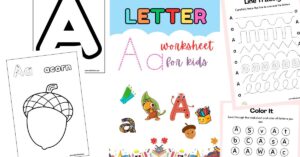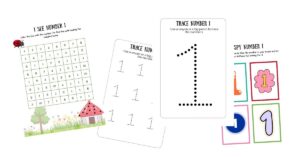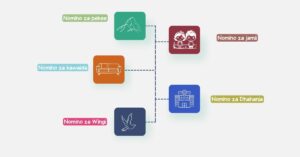Crayons are usually the first art supply that goes into your little ones’ hands. And besides being incredibly fun, coloring with crayons helps develop a child’s motor skills, creativity and focus. But with so many crayons popping into the market today and reports of asbestos and other toxins in some of them, what kind of crayons are best for toddlers?
The best type of crayons to buy for toddlers are beeswax crayons because they are safe, non-toxic and easier to color with. If you must buy paraffin wax crayons, go for twistable crayons which are encased, so the child doesn’t come into direct contact with the crayon itself.
But let’s not judge so fast before learning more about all the other types of crayons and what we should look for when buying a pack for our toddlers.
Types of Crayons for Toddlers
The term crayon refers to any drawing medium in stick form, not just the wax crayons we are used to. The main ingredients are usually color pigment and a binder, and it’s the binder that gives them their name. Some of the most common types of crayons for toddlers include;

1. Paraffin Wax Crayons
Paraffin wax-based crayons are what people usually refer to as crayons, as they are a staple in every home and school worldwide. They are made by melting paraffin-based wax, adding dye or color and molding them into different shapes. More often than not, these crayons are also wrapped with thin branded paper, and they can be sharpened when dull.
Crayola is the leading brand for paraffin wax-based crayons though other brands exist. And while these crayons come in a million colors, sizes and shapes, they are also pretty fragile and don’t give off the best coloring experience.
Previous reports have also associated wax-based crayons with toxins, including asbestos, which is pretty deadly.

2.Twistable Crayons
If you don’t like dirty surfaces, twistable crayons might be just what you need to get for your kids. These crayons feature a retractable plastic barrel that protects the crayon lead when not in use. You don’t have to worry about the kids staining walls or fabrics during an activity. Furthermore, most twistable crayons are washable, making cleaning more manageable.
They’re also convenient for on-the-go children’s activities. Unlike traditional crayons, these twistable crayons don’t require frequent sharpening, making them ideal for running errands, traveling, or outdoor activities with kids. The plastic encasing protects the crayons against breakage and can withstand extra pressure during coloring activities. What’s more, your kids can use these crayons until the lead is consumed because twistable crayons don’t require sharpening.
These are the most common types of crayons, especially for kids developing their fine motor skills and exploring their creativity. They are comfortable, durable, and most offer a wide color variety. In addition, many kid-friendly crayons are made with non-toxic materials, but you should always research every manufacturer and only buy from reputable and child-friendly brands.Finally, plastic crayons for kids have always been a controversial topic. Are they safe? Should parents avoid these crayons? Well, read this article for a detailed breakdown of plastic crayons and kids’ safety and a guide on buying the best crayons for your kids.

3. Plastic Crayons
Despite the name, plastic crayons aren’t actually made of plastic. They are also petroleum wax-based crayons, except they have some plastic components. Instead of wax and pigment only, plastic crayons contain a specific percentage of plastic known as polyethylene.
This improves the crayon’s hardness, smoothness and color quality. In fact, plastic crayons are three times harder and stronger than regular crayons, so it’s very difficult for your child to break them. The plastic component also makes these crayons smudge-free on paper and your hands.
But more importantly, plastic crayons glide more smoothly on paper than regular crayons, making their color transfer easier and more vivid. And did I mention they are also erasable? Most plastic crayons are also certified toxic-free after passing all the ASTM D-4236 standards.

4. Beeswax Crayons
As the name suggests, beeswax crayons are made of beeswax-the by-product of honey making process by bees. The beeswax is harvested, melted, and mixed with pigment before being molded into shapes.
These are the safest crayons for toddlers and the most environmentally friendly because beeswax is made by bees regularly. The crayons also glide more smoothly and transfer color more easily than regular crayons, not to mention their colors are more vivid and beautiful.
Although beeswax crayons come in fewer colors than paraffin wax crayons, they are fun to work with and can be made at home. Plus, the crayons are a cheaper gift idea for toddlers and you don’t have to worry about your baby eating them. If you’re interested in more gift ideas, I have the perfect article, listing several gifts for kids who love to draw.

5. Pastel Crayons
The binder in pastel crayons is gum or resin, though oil pastels use a non-drying oil and wax as binders. The water, binder and pigment ratio makes a pastel crayon hard, soft or pan, and they are quite popular with artists.
While some pastels look like regular crayons, many are stick-like in different colors. They also smear and smudge quite easily both on the coloring surface and the artist’s hands. This may be why parents prefer real crayons over pastels.
As an artist though, pastel crayons are better because they are rich, soft and creamy. This means they are easy to smear, blend, and layer, and you can even use your fingers to get the desired results.
What’s more, two colors can mix well together; something regular crayons don’t do. Plus, it’s possible to get a 3D effect with pastels than any other coloring medium.

6. Washable Crayons
If you are a fan of Crayola crayons, you have definitely seen their famous ultra-clean washable crayons. They are specially formulated to create less mess and easily wash off from skin, clothes and painted walls. This formulation is based on the fact that kids can sometimes color on your favorite white couch or walls in your absence.
However, at the heart of these crayons is still petroleum wax mixed with other ingredients like polyethylene glycol, stearic acid, polyoxyethylene nonyl phenyl ether and calcium carbonate. They are 100% non-toxic and safe for toddlers, which is why they are a best seller.
7. Jumbo Crayons
We have an entire article on why kids in preschool use big crayons and pencils, so it’s no surprise that manufacturers design these types of crayons. These are the best type for younger kids learning new grip techniques and how to control their hand movements. The thick size provides a comfortable grip for their tiny hands, allowing your little ones to explore their creativity easily.
Furthermore, their size makes jumbo crayons durable and less likely to break. This is important because kids apply pressure when coloring, which can cause smaller crayons to break. In addition, kids don’t really take care of their supplies; they’ll throw the crayons on the ground, step on them, and more. The large size enhances durability and saves you money in the long run.
8. Metallic Crayons
Metallic crayons have a shimmery or metallic finish when applied to paper and other art canvases, making them a favorite for creative kids. These crayons produce a reflective effect and can be used to add sparkle and shine to artwork. Metallic crayons are great for creating special effects or adding accents to drawings to produce unique and eye-catching children’s artwork.
Furthermore, the shimmering effect excites kids and encourages them to try different artistic ideas. For example, they can pair the vibrance of watercolor crayons with the metallic finish to design visually-appealing pictures, posters, or crafts. The metallic crayons are versatile and will produce a stunning finish on paper, cardboard, and dark-colored surfaces.
Metallic crayons are also great for providing engaging sensory experiences. They have a creamier and smoother texture than standard crayons, making the application fun for kids. Seeing the metallic, shimmery finish as they draw is satisfying and enjoyable for kids. But beware of a mess because some metallic crayons will transfer the shimmer onto surfaces. It is better to buy brands that don’t create transferable shimmery effects.
9. Scented Crayons
Scented crayons offer pleasant fragrances and brilliant colors, which provide a multisensory experience. They come in various scents, from fruity to flowery, and they provide an added layer of enjoyment to your child’s coloring hobbies. Moreover, children love scented crayons because they’re frequently used in educational settings to interest young students.
They offer an immersive experience that engages the olfactory and visual senses. Remember, scents can evoke memories attached to different situations. So, when kids use scented crayons, they develop positive associations between the scents and their coloring experiences. This process enhances their creativity and makes the activity more enjoyable for the kids.
However, you must consider your child’s allergies before buying scented crayons. In addition, choose mild-scented crayons because strong scents can overwhelm your child, making the activity unbearable.
How to Select the Best Crayons for Your Toddlers
With all these options available, how do you know the best type of crayon for your toddler? Here are the things you should consider.
1. The Material
The makeup of a crayon determines three things; strength, color and safety. You want hard, strong crayons for your toddler because they drop them and try to break them every second. You also want a crayon that easily transfers color to paper or surface without using too much arm strength and gives vivid colors.
But more importantly, you want a crayon that’s non-toxic and safe for your child. Even better if the crayon structure prevents the kid from eating the actual crayon. With these conditions in mind, it seems the best material for toddler crayons is beeswax or twistable plastic crayons.
2. Color Variety
Because crayons are the first chance your child gets to play with color, it’s only right to provide them with as many colors as possible. Petroleum wax-based crayons win in this category, with Crayola offering even 60 colors in one pack, but you can also get a decent range with other types.
The basic idea here is that your choice of crayons should provide at least ten different colors.

3. Are they Child-Friendly?
By child-friendly, I mean ease of use, considering the strength and size of a child’s hand. The best crayons should be big enough to hold, and the shape should allow a good grip. Our article on big pencils and crayons further explains why size matters when selecting crayons for your child.
While most crayons are round, triangular or ergonomically shaped crayons, they seem more comfortable on a child’s hand. Choose a crayon type that transfers color easily. The last thing you want is the toddler to strain their poor hand trying to color a picture.
4. Washable
Lastly, you want a crayon that comes off your hands, clothes and walls with just some soap and water. This completely eliminates pastel crayons because they get to stick on the surface more. Keep in mind that children will color places they are not supposed to, no matter how vigilant you are, so the only thing you can do is buy washable crayons.
There’s no denying the immense benefits of exposing your child to art and hands-on activities. But it should start with providing the best tools for their age.
Where crayons are concerned, beeswax is still the best option for toddlers. However, read our article on plastic crayons, as they are a close second to learn all about them and how to keep your little one safe when using them.




